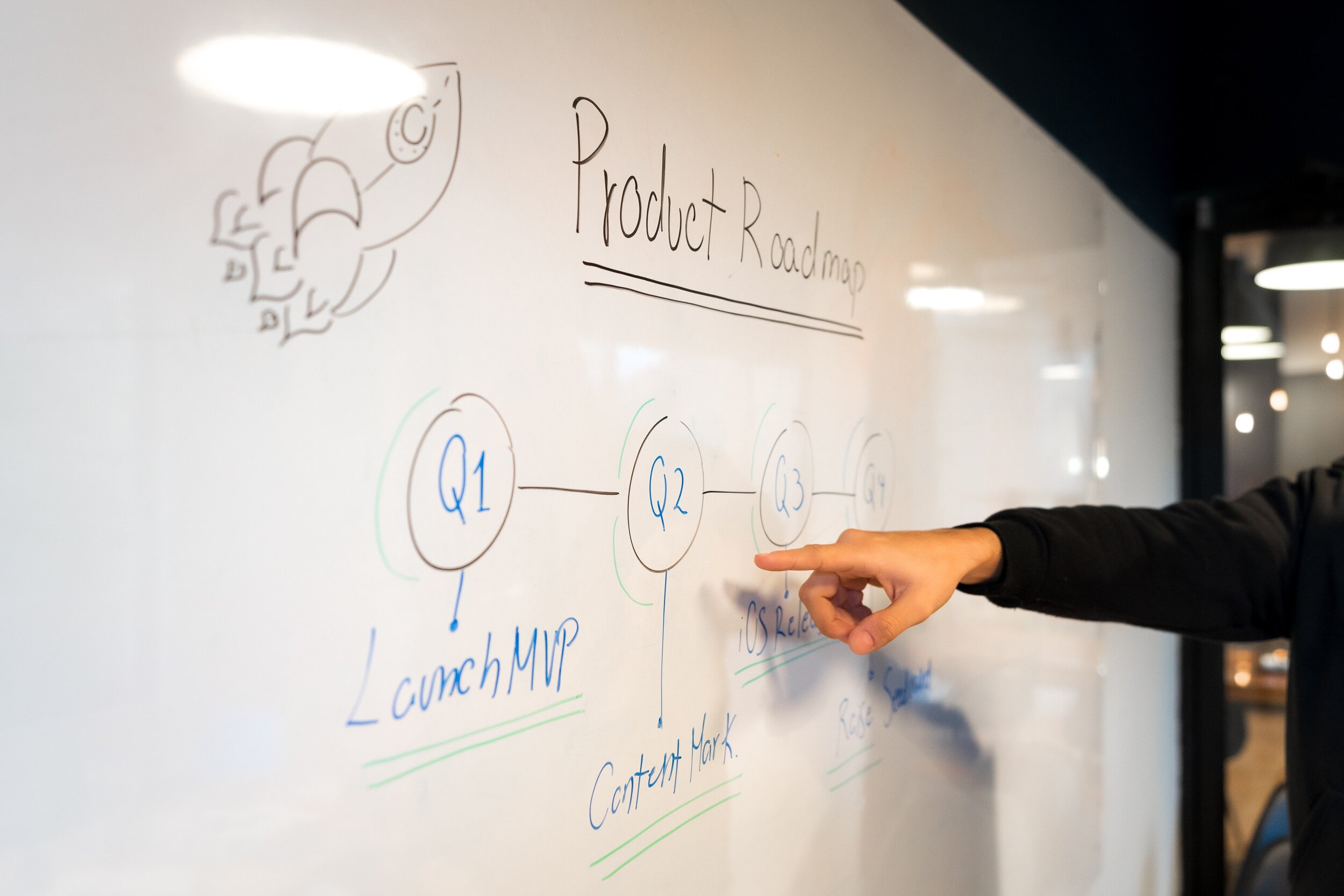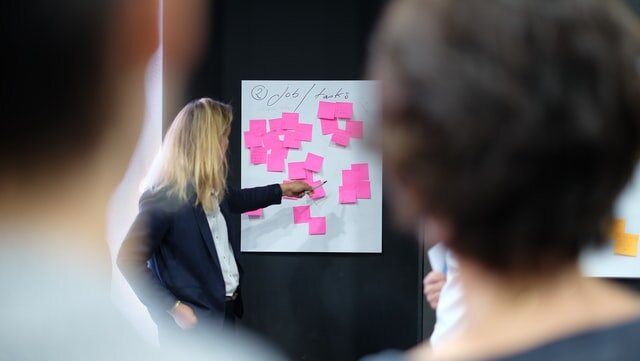The Innovation Culture
The most important success factor for corporate innovation? A strong, authentic culture that encourages continuous improvement through novelty - a ‘value system’ promoting experimentation, collaboration, and knowledge sharing.
When this special ‘culture of innovation’ is not there, even the most well-designed and promising innovation programs fail to meet the business expectations. To establish this culture, companies must transform the ways people and teams understand innovation — in the context of their company. To foster true innovation, corporate leaders need to introduce new models of collaboration along with a modern, agile approach regarding opportunity discovery, validation and realization - as described in the following.
→ Check also: Building an MVP: How to define the first instance of your product 1. Experimentation
The level of innovation of a company depends on its readiness to discover, validate and realize ideas - for new products, services, features, or business models. To increase this readiness, both employees and the leadership need to adopt a new attitude towards experimentation, risk-taking, and failure. In fact, failure can be seen as part of the overall innovation process, since it can feedback significant insights, results, metrics, and findings that make teams wiser and faster.
Following practices like ‘rapid prototyping’ and principles like ‘fail fast, fail-safe’, ideas can be quickly prototyped and exposed to real users. This allows for informed decisions, early in the process and at minimum cost. For instance, in a rapid prototyping scenario, the team might realize early enough that, although the prototype looks good and is working fine, the predefined success criteria and/or user expectations cannot be met. This provides enough information to make good product development decisions, like evaluating if this gap can be fixed under acceptable cost and thus continue iterating, ‘kill’ or ‘park’ the idea.
Beyond improving the capacity of the company to make informed product development decisions, the experimentation approach also changes the perception of ‘failure’ within the company and introduces mechanisms to handle it: people are encouraged to test new ideas, and gradually accept ‘failure’ simply as an opportunity that didn’t make it to the next stage - due to clear and objective justification.
Check also: our unique Innovation Toolkit - a collection of seven innovation templates that empower teams to frame problems, shape ideas, run hackathons, and more.
2. Sharing and Collaboration
Employees need to enter a mode of ‘information sharing’ and ‘open collaboration’: innovation benefits when people proactively share ideas, they accept and provide constructive feedback, and are ready to collaborate with others to take promising ideas to the next level.
Modern companies need to offer a channel for employees to register their ideas - to make them discoverable by the right teams and decision-makers. With the right support, this channel can establish a stream of ideas and form an ‘internal opportunity marketplace’ where employees discover ideas, self-organize into cross-functional teams, experiment and pitch their projects to senior leadership. Promising cases identified through this process, join rapid prototyping and validation cycles which eventually lead to new products, services, or offerings to the market. An always-on ideation, collaboration, and intrapreneurial channel.
3. Flexibility of Roles
Innovation is not compatible with strict roles, rigid organizational structures, and isolated responsibility areas. Companies that truly believe in innovation, offer their employees flexibility to go beyond their formal role and take the right shortcuts to explore their ideas further. In such an environment, employees can easily form teams and start working on ‘side innovation projects’ without formal approvals or formal resource assignments. Teams can use office space designed to support innovation and creative thinking; they can easily get the equipment and technology resources needed to experiment with their idea.
4. Modern Innovation Tools, Processes, Events
To establish a culture of Innovation, special processes, techniques, and practices are also needed. Innovative companies encourage the formation of cross-functional teams to solve well-defined problems and pursue business opportunities. They invest in increasing the readiness of the organization to ideate, prototype, and validate innovation opportunities, at pace and at scale.
In one form, special events such as ‘Design sprints’ and similar prototyping workshops, bring together talented multidisciplinary teams that attempt to address a challenging problem in a short period of time (e.g. 3–5 days). They collaboratively refine the problem, generate ideas, define concepts, and pick the most promising ones to further explore. They build wireframes and prototypes which are then exposed to real users - real feedback is used to make informed decisions about next iterations and the product development plan.
Other formats may involve ideation processes, such as hackathons, with the objective of generating large sets of ideas and prototypes addressing a particular problem or opportunity.
These and related events are powered by the culture of Innovation but they also define it: they help make corporate innovation more tangible and contextual, and at the same time they provide real examples of the importance of multi-disciplinary teams and new collaboration models.
5. Innovation Gamification
Gamifying certain aspects can play an important role in growing this culture of innovation. While the authentic innovation spirit should be there independently of motivation and rewards, a properly designed gamification program can drastically boost the adoption of innovation practices, and also make innovation more ‘fun’, ‘real’, and interactive.
In a modern, innovative environment, innovation activities can be captured and processed in order to identify the top-performing content (ideas, innovation artifacts) and top innovators.
Employees performing innovation activities accumulate points which are then aggregated across the structure of the company (teams, divisions, products, geographies). ‘Innovation points’ are used primarily to identify, recognize, and celebrate top innovators, innovation outcomes, and the innovation process itself. For example, through an ‘innovation leader board’ presenting top ideas and other success stories, throughout the organization, innovators gain reputation, visibility, and, eventually, opportunities to promote their ideas and get the support they need.
Such programs provide short and effective feedback loops between the innovation community and the organization and can lead to significant levels of awareness and general interest in innovation.
6. Access to Technology and Knowledge
Access to the latest technologies and related knowledge is also essential for adopting a strong innovation culture. Modern companies introduce programs targeting systematic, efficient knowledge and expertise sharing among employees and teams. In many cases, specially configured and equipped office spaces and innovation labs also help in this direction — for instance, a ‘maker space’, exposing technology, equipment, and devices to facilitate rapid prototyping and experimentation.
The transition to the ‘innovation culture’ is difficult and expensive. The company needs to enter a mode of continuous searching for opportunities for better products and services that bring value to users, employees, the company, the market, the society. It requires commitment from the leadership and the right mindset from the workforce: a value system on top of experimentation, collaboration, and knowledge sharing.
Check also: our unique Innovation Toolkit - a collection of seven innovation templates that empower teams to frame problems, shape ideas, run hackathons, and more.









MVPs and Startups - Why should a startup follow the MVP approach? How do you prioritize features? Answering these and other frequent questions people ask me about Minimum Viable Products - MVPs